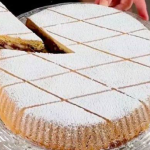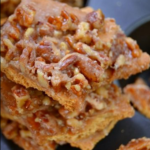Almond paste: the original recipe to prepare it at home
Almond paste , also known as marzipan, is a traditional Sicilian recipe : a basic pastry dough used to prepare almond paste , small pastries decorated with dried or candied fruit typical of the Christmas period, marzipan fruit and pinches . Unlike marzipan , another well-known Sicilian sweet made from almonds, marzipan has a grainier texture because it is made with whole ground almonds , but at the same time it is moist, crumbly, and melts in your mouth.
We present the original Sicilian recipe , without egg whites, which requires a handful of ingredients and a few minutes of preparation: you just need to peel and chop the almonds before adding them to the syrup made with water, sugar and honey, then knead the dough form a loaf and let it rest in the refrigerator before using it in your creations. Although the procedure is very simple, however, to obtain a perfect result, some precautions are essential, starting with the almonds: prefer whole ones to ready-made flour, because they will make the dough more moist and tasty. You can buy peeled almonds or remove the skins yourself, as long as they are of excellent quality.
After the basic preparation, we will make the pastries at home , as good as those found in bars and pastry shops in Sicily alongside other specialties such as cassata and cannoli . In this case the sweets are prepared by mixing almonds, peeled and blended, with egg whites, icing sugar and flavourings; the mixture thus obtained is transferred to a sac à poche or can be modeled simply with the hands. The rest in the refrigerator is also essential, which must be at least 10 hours to allow the flavors to amalgamate: in this way, moreover, the biscuits will keep their shape during the short cooking in the oven, of 10-15 minutes at most.
Perfect to serve as a snack together with tea or herbal teas or to offer to your guests as a dessert after a meal , accompanied by a glass of your favorite liqueur, the pastries are also ideal for a pastry cabaret : alternate them with snow biscuits , madeleines , Neapolitan cartridges and cornmeal paste for a scenographic composition to be savored. They are also gluten-free, also suitable for intolerant people, and perfect as gifts because they keep for a long time, up to three weeks at room temperature.
Find out now how to prepare almond paste and Sicilian almond paste by following the procedure and advice step by step.
ingredients :
For the almond paste
Shelled almonds
150 gr
Caster sugar
150 gr
Water
40 ml
Honey
1 tablespoon
Vanilla extract (optional)
q.b.
For the almond paste
Blanched almonds
250 gr
Powdered sugar
250 gr
albums
60 gr
Vanilla extract
1 Teaspoon
Almond flavour
1/2 vial
Lemon
1
Sugar
q.b.
Candied cherries
q.b.
How to make almond paste
Step 1
Start preparing the almond paste by cooking the almonds in a saucepan with boiling water for 3 minutes 1, then drain and dry them carefully with a kitchen towel.
Step 2
Boiling is essential to remove the outer skin effortlessly: just pinch the almonds between your thumb and forefinger and it will come off easily2. Make sure they are completely dry, otherwise put them in a hot oven at 100°C for a couple of minutes.
Step 3
At this point, combine the almonds in a kitchen mixer and blend them until you get a fine flour3. To prevent them from overheating and releasing the oil, cycle at even intervals, leaving a few seconds between each cycle.
Step 4
In a small saucepan, over medium heat, prepare a syrup with water and sugar. When the sugar has dissolved, add the vanilla extract and honey4.
Step 5
Then pour the almond flour into the syrup and mix well with a wooden spoon5.
Step 6
Transfer the compound to a plane and let it intiepidate for a few minutes by spreading it on a sheet of oven paper6.
Step 7
When it is still hot, but not boiling, work the almond paste with your hands to compact it and mix the ingredients well together, then give the dough a cylindrical shape7.
Step 8
Then close the stick in the transparent film, wrap tightly8and put it to harden in the refrigerator for at least 4 hours, preferably overnight.
Step 9
After resting, your almond paste is ready to use for your sweet creations9.
How to prepare Sicilian almond pastries
Step 10
To prepare the almond paste, follow the steps described above to obtain the almond flour. Then put it in a bowl together with the sugar and the aromas and add the egg white a little at a time. Knead first with a wooden spoon and then by hand for about 5 minutes: you’ll need to obtain a compact but soft dough. If the compound turns out to be too soft, add a little almond flour, if, on the contrary, it is too dry, add a spoonful of egg white. Shape the sweets with a pastry bag with a wide nozzle or by making balls of about 15 g each with your hands, as we did. Then pass them in the granulated sugar and create hollows in which to insert candied cherries or almonds. Leave the pastries to rest in the fridge for at least 12 hours, then cook at 170°C for 15 minutes, they should just brown.10.
Advise
Perfect for making different types of sweets, almond paste lends itself very well to the preparation of delicious tarts : place a disk about 3 mm thick on top of a classic shortcrust pastry , cover it with cherry jam and decorate it all with almond flakes to recall the taste inside. Then bake at 180 °C for about 30 minutes or until golden brown.
storage
The almond paste can be kept in the refrigerator, wrapped in transparent film, for a couple of weeks . To always have it ready, you can also prepare it in large quantities, portion it into 200 gram blocks and freeze it. Almond pastes, on the other hand, can be kept at room temperature for 2-3 weeks, inside an airtight container or tin can.
Origins and history
As often happens with traditional recipes, the origins of marzipan are rather uncertain. In fact, it seems that a similar preparation, based on dried fruit and cane sugar, was already widespread in the sixth century among the Arab populations: according to this legend, it was therefore during the Islamic domination of the island that the marzipan arrived in Sicily . However, a second version seems to be more accredited, which places the birth of the dessert in the Martorana Convent, in Palermo, at the end of the 1100s. The convent was annexed to the church of Santa Maria dell’Ammiraglio, named in honor of Giorgio d’Antiochia, who was in fact the admiral of the king of the time, Roger II. The link with the crown, albeit indirect, probably explains why marzipan is also called marzipan: its goodness made it worthy of a king.








